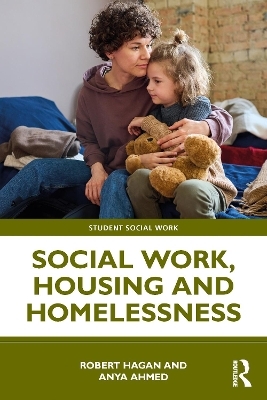
Social Work, Housing, and Homelessness
Routledge (Verlag)
978-1-032-56263-6 (ISBN)
- Noch nicht erschienen (ca. März 2025)
- Versandkostenfrei
- Auch auf Rechnung
- Artikel merken
This book examines how all types of housing have become precarious for many service users with whom social workers will engage and makes some suggestions regarding action and best practice. Showing how people become homelessness and the difficulties finding a way out of this, the housing options for specific populations including care leavers, those with disabilities, families and older people will be examined. All this will be framed in the context of social work practice, building practitioner knowledge and confidence around an area that affects everyone but the significance of which is sometimes underexamined in holistic assessments. Packed with reflective examples and case studies, each chapter also includes a ‘tuning in’ exercise to help prepare the reader for what the chapter will tackle, with concluding thoughts on these exercises at chapter end.
This book is suitable for both undergraduate and postgraduate social work students as they begin to think of more specialised areas of work in their second or subsequent years, as well as social work practitioners, who will be increasingly aware of the pressures of housing costs on those with whom they work.
Robert Hagan is a senior lecturer in social work at Manchester Metropolitan University. Anya Ahmed is Professor of Wellbeing and Communities at Manchester Metropolitan University, as well as Academic Director of the university’s Doctoral College.
0.Introduction: Why social work, housing and homelessness? Part One - Housing choices, options and limitations. 1.A place to call home: Where do we live and what does it mean? 2.Property, land, and shelter: Commodity or right. 3.Cohesive communities and segregated estates: Values and challenges. 4.Housing precarity and disadvantage today: Adjusting service provision to tackle injustice and new risks. Part Two - Homeless experiences and specific housing needs. 5.Homelessness and single people: Supporting routes to shelter and security. 6.Women, children, families and homelessness: Advocating for and maintaining family security. 7.After care: where now? Care leavers and other young people at risk of rootlessness. 8.Adults with disabilities: Options, transitions and new beginnings. 9.Older people: Autonomy, restrictions and care. Conclusion - How now should social work respond to housing?
| Erscheint lt. Verlag | 12.3.2025 |
|---|---|
| Reihe/Serie | Student Social Work |
| Zusatzinfo | 10 Tables, black and white; 10 Line drawings, black and white; 10 Illustrations, black and white |
| Verlagsort | London |
| Sprache | englisch |
| Maße | 156 x 234 mm |
| Themenwelt | Medizin / Pharmazie |
| Sozialwissenschaften ► Pädagogik ► Sozialpädagogik | |
| Sozialwissenschaften ► Soziologie | |
| ISBN-10 | 1-032-56263-3 / 1032562633 |
| ISBN-13 | 978-1-032-56263-6 / 9781032562636 |
| Zustand | Neuware |
| Haben Sie eine Frage zum Produkt? |
aus dem Bereich


